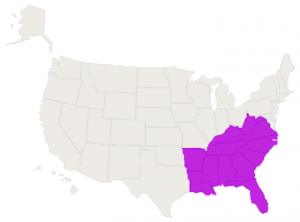By Cheri Ely, M.A., LSW, Program Manager, NCJFCJ
 The National Council of Juvenile and Family Court Judges (NCJFCJ) Juvenile Justice Model Courts Project, managed by the Juvenile and Family Law Department, has expanded the number of courts participating in the project to 12. Four of the recently added sites in the project (Pittsburgh, Pa., State of Minnesota; New Orleans, La.; and Memphis, Tenn.) are developing goals and addressing challenges to achieve the recommendations from the Juvenile Delinquency Guidelines: Improving Court Practice in Juvenile Delinquency Cases. Model courts are asked to select goals in accordance with the 16 Key Principles and various recommendations made in the Guidelines.
The National Council of Juvenile and Family Court Judges (NCJFCJ) Juvenile Justice Model Courts Project, managed by the Juvenile and Family Law Department, has expanded the number of courts participating in the project to 12. Four of the recently added sites in the project (Pittsburgh, Pa., State of Minnesota; New Orleans, La.; and Memphis, Tenn.) are developing goals and addressing challenges to achieve the recommendations from the Juvenile Delinquency Guidelines: Improving Court Practice in Juvenile Delinquency Cases. Model courts are asked to select goals in accordance with the 16 Key Principles and various recommendations made in the Guidelines.

The model court site in Pittsburgh, Pa., under the leadership of Judge Kim Clark, has completed its first full site visit and assessment and is in the process of completing its model court strategic plan. The model court has selected an overarching goal to treat all youth, families, victims, and witnesses with dignity and respect, and has also chosen additional goals targeting diversion programs for youth, timely decision making, and family/community engagement in the court process.
Minnesota, the only statewide participant in the model courts project, is working on a statewide implementation of the recommendations from the Juvenile Delinquency Guidelines. The Minnesota JDG Statewide Initiative, led by the Juvenile Justice Coalition of Minnesota, held a one-day training in June 2011 for juvenile court judges and juvenile justice professionals from around the state. The training provided a thorough orientation to the Guidelines and model court practices, including how to use the model court self-assessment tools in local jurisdictions. The Initiative is now hard at work to complete the Minnesota Juvenile Delinquency Courts Guidebook. Law students from the University of Minnesota are assisting to transfer the information from NCJFCJ’s Juvenile Delinquency Guidelines into a manual specific to laws and practices in Minnesota for use by its juvenile courts.
New Model Court sites in New Orleans, La., under the leadership of Judge Tracey Flemings-Davillier, and in Memphis, Tenn., under the leadership of Judge Curtis S. Person, have also completed their first full site visit and assessment and are moving into the strategic planning phase of the model court process.

Veteran model courts in the program are also continuing to move forward with their strategic plans. The model court in San Jose, Calif., under the leadership of Judge Patrick Tondreau, is implementing new practices to address youth in the court system who are both delinquent and dependent, and is working to engage parents and community support systems into juvenile cases. In 2011, the San Jose Model Court visited the model courts in Salt Lake City, Utah, and Tucson, Ariz., to learn about programs and practices in those jurisdictions that may help the San Jose Model Court accomplish its goals.
The Reno, Nev., Model Court, under the leadership of Judges Frances Doherty and Janet Schmuck, is in its third year as a model court and continues to follow its model court strategic plan. The court is working to streamline practices to improve case flow and timely case processing and is reviewing its data capabilities to improve information sharing with system partners and stakeholders. The Reno Model Court has also prioritized training opportunities for its staff and juvenile justice professionals. Through private funding for scholarships, five participants were able to attend NCJFCJ’s National Conference on Juvenile and Family Law in March 2011.
All sites in the Juvenile Justice Model Courts Project continue to embrace the model court philosophy of performing ongoing evaluation and system improvement. The project operates an active online discussion group for the model court sites to engage in networking and information sharing. New model court sites are encouraged to join the project anytime during the year.
Want to Become a Model Court?
Courts can contract with the NCJFCJ to become a Juvenile Justice Model Court site and receive individualized assessment, planning, training, technical assistance, and evaluation services as they seek to implement the principles and recommendations set forth in the Guidelines and work toward improved practice and outcomes. Each Model Court secures its own funding to underwrite the multi-year process. Funds may be public, private, local, state or federal. Although Model Courts can contract on a yearly basis, we encourage courts to remain involved in the project for at least three years in order to maximize system change/improvement. With multi-year involvement, Model Courts repeat the planning and technical assistance process on an annual basis as court improvement goals are attained. As part of this effort, Model Courts are expected to be “laboratories for change,” meaning that they participate in an ongoing critical assessment of their performance and share their results with other sites in order to inform and sustain a larger system improvement effort.
Juvenile Justice Model Court Project Focuses on JDG Principles
The focus of the Juvenile Justice Model Court Project has been to disseminate the Juvenile Delinquency Guidelines and encourage its use by jurisdictions to help guide system reform and improve practice in delinquency cases. The model courts—with support from project staff in the form of training and technical assistance, and a commitment to using the Juvenile Delinquency Guidelines to improve practice from intake to case closure—are leaders in this important system reform effort.
Active Juvenile Justice Model Courts include
- Austin, Texas – Lead Judge W. Jeanne Meurer (Ret.)
- Buffalo, New York – Lead Judge Paul Buchanan
- Cincinnati, Ohio – new Lead Judge to be determined
- Howell, Mich. – Lead Judge Carol Hackett Garagiola
- Memphis, Tenn. – Lead Judge Curtis S. Person
- Minnesota Statewide JDG Initiative – led by the Juvenile Justice Coalition of Minnesota
- New Orleans, La. – Lead Judge Tracey Flemings-Davillier
- Pittsburgh, Pa. – Lead Judge Kim Clark
- Reno, Nev. – Co-Lead Judges Frances Doherty and Janet Schmuck
- San Jose, Calif. – Lead Judge Patrick Tondreau
- Scranton, Pa. – Lead Judge Chester Harhut
- Tucson, Ariz. – Lead Judge Karen Adam
 Cheri M. Ely is a Licensed Social Worker whose duties at the National Council of Juvenile and Family Court Judges include management of the Delinquency Model Courts Project. She is responsible for the expenditure of funds and completion of deliverables for each model court site, manages the Juvenile Court Users’ Project, and assists courts with implementation of strategies to enhance the engagement of victims of juvenile offenders in the court system.
Cheri M. Ely is a Licensed Social Worker whose duties at the National Council of Juvenile and Family Court Judges include management of the Delinquency Model Courts Project. She is responsible for the expenditure of funds and completion of deliverables for each model court site, manages the Juvenile Court Users’ Project, and assists courts with implementation of strategies to enhance the engagement of victims of juvenile offenders in the court system.
 There is a recent New Yorker article that asks how to be your best and in the course of that discussion addresses the issue of coaching for experienced practitioners (the article focuses on surgeons). There might, in fact, be implications for us and our profession.
There is a recent New Yorker article that asks how to be your best and in the course of that discussion addresses the issue of coaching for experienced practitioners (the article focuses on surgeons). There might, in fact, be implications for us and our profession. Please join us in welcoming the following new NASJE members:
Please join us in welcoming the following new NASJE members:
 Director’s Message from Cynthia D. Davis
Director’s Message from Cynthia D. Davis